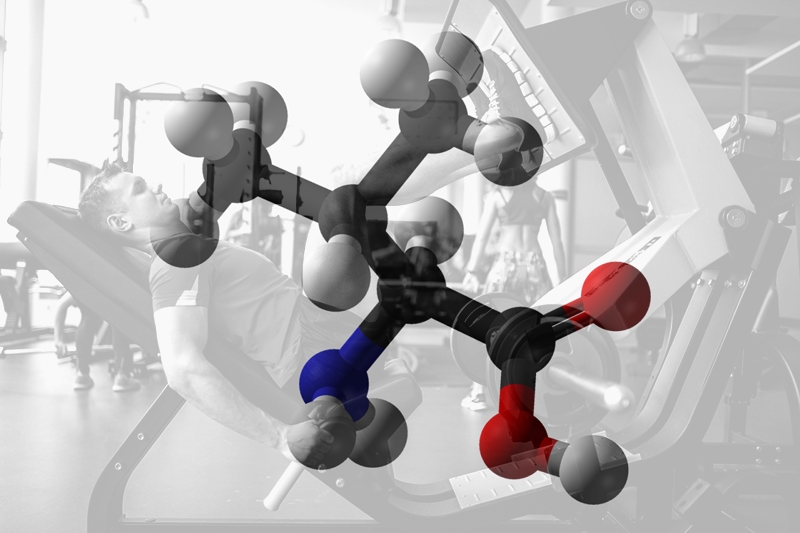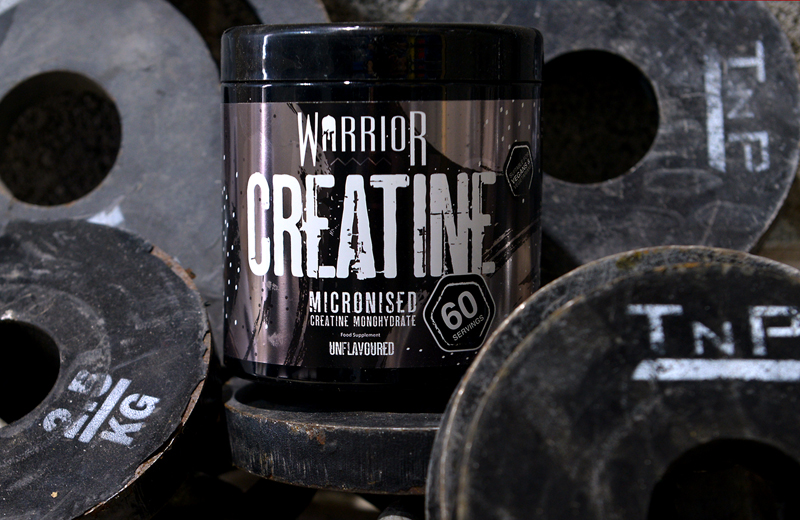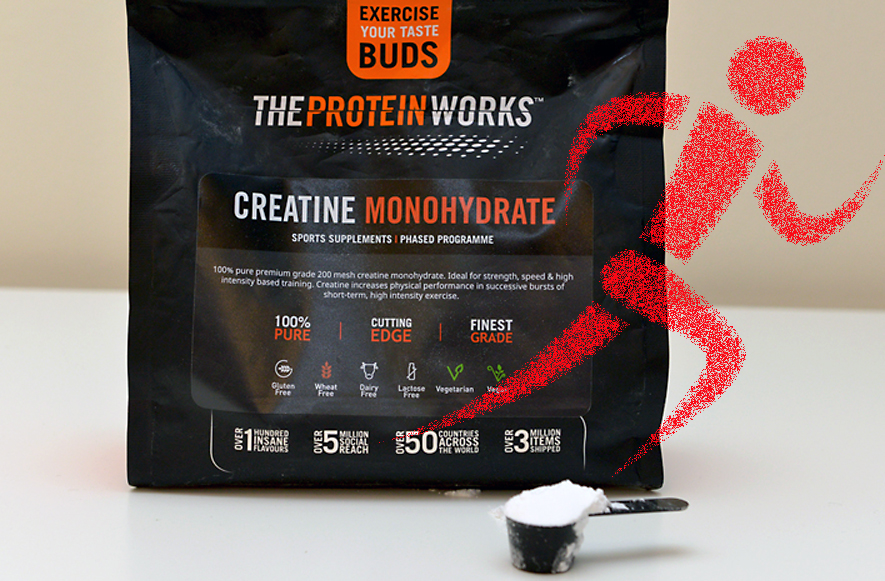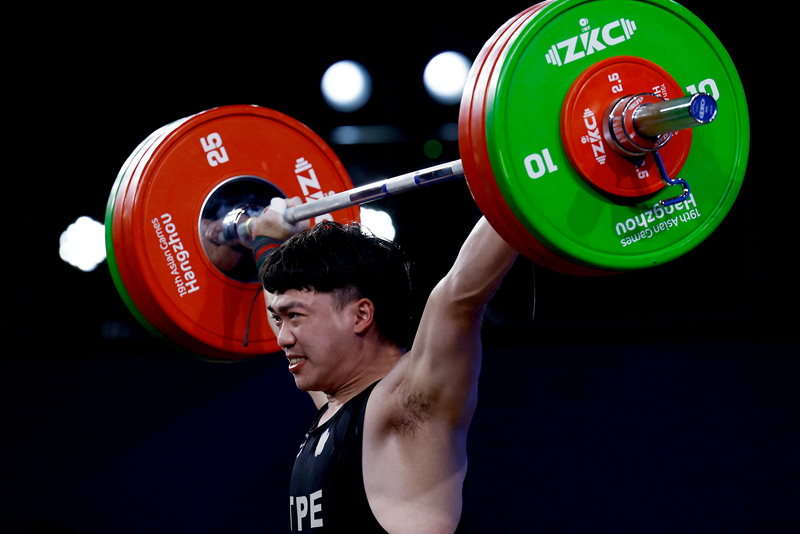You are viewing 1 of your 1 free articles. For unlimited access take a risk-free trial
Amino acid supplementation: all in the mind?
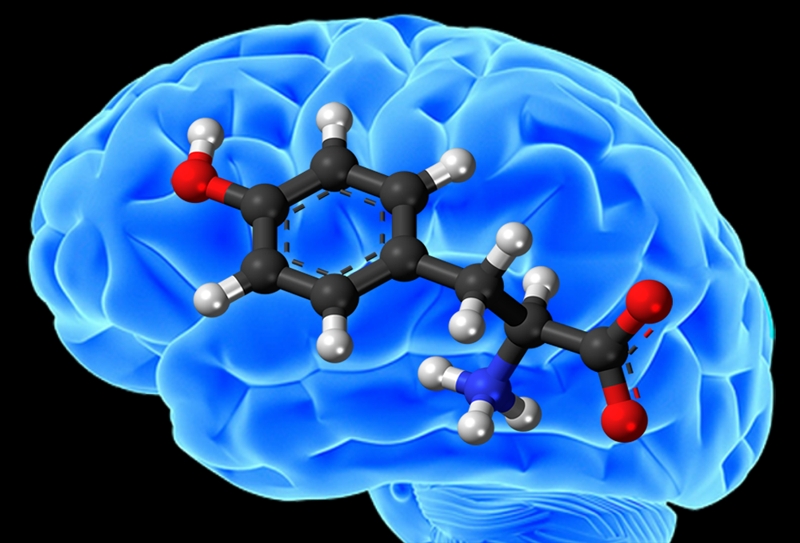
Can single amino acid supplementation improve athletic performance? SPB takes a fresh look at the evidence
Amino acids are the building blocks of all proteins, including muscle protein. Unsurprisingly therefore, amino-acid nutrition has been extensively studied in relation to muscle recovery/repair following exercise, and of course muscle mass and strength gains. There are nine ‘essential’ amino acids, which the body needs to construct proteins. These are:- Histidine
- Isoleucine
- Leucine
- Lysine
- Methionine
- Phenylalanine
- Threonine
- Tryptophan
- Valine
Single vs. mixed amino acids
However, using sophisticated manufacturing techniques, it’s possible to isolate single amino acids - and that’s where things get rather interesting. That’s because some of the key neurotransmitters in the brain are very closely related chemically to certain amino acids – ie these neurotransmitters are synthesised from amino acids in the brain. An example is the neurotransmitter serotonin, which is synthesised in a 2-step process from the amino acid tryptophan (see figure 1 and box 1).Box 1: The importance of serotonin
Serotonin functions as a neurotransmitter to carry signals between nerve cells (called neurons) throughout the body. Most people are aware of serotonin's importance for the central nervous system (CNS) and its role in proper mood regulation and memory; low serotonin levels are known to be a prime cause of depression, which is why anti-depressant medications typically act to slow down the rate at which serotonin is broken down, thus increasing concentrations in the brain(1). However, the neurotransmitter also has important jobs in other parts of the body. Not only do the intestines produce almost all of the body's serotonin supply, but serotonin is required there to promote healthy digestion(2). Elsewhere, optimum levels of serotonin are known to help with sleep, sexual function, bone health, and blood clotting(3).Figure 1: Synthesis of neurotransmitter serotonin from the amino acid tryptophan

Because some single amino acids can be synthesized into key brain neurotransmitters, taking enough of a dose of a single amino acid can affect brain chemistry in a way that doesn’t occur when consuming a mix of amino acids (ie eating dietary protein). This altered brain chemistry may also be able to affect hormone balance in the body (in ways that could be advantageous to athletes).
A key question is why can single amino acids taken away from each other exert this effect while mixtures of amino acids consumed together (as proteins in food) don’t? The reason is that many of these single amino acids ‘compete’ to cross the blood brain barrier. The brain is the master organ in the body and is extremely sensitive to a large number of compounds and molecules that may be circulating in the blood. It is critically important therefore that any potentially toxic molecules are blocked from entry to the brain, while those required for proper brain function are selectively allowed in. This is the function of the blood-brain barrier.
When it comes to amino acids, these molecules are allowed to cross the blood-brain barrier but they compete with each other for absorption. When a protein-rich meal is consumed, the blood levels of a wide range of amino acids are raised, which means that they are all competing for absorption across the blood-brain barrier, and no single amino acid is elevated in the brain preferentially. However, when there are no other amino acids to compete for absorption, consuming a single amino acid away from other proteins means that it can cross this barrier unimpeded, which significantly raises the level of that amino acid in the brain more than the others, potentially affecting brain chemistry and possibly hormone balance.
Single amino acids and sport performance
If single amino acid consumption can alter brain chemistry/function and affect hormone balance, are there some amino acids that could help alter this in a way, which is favourable for sport performance? Surprisingly, this is an area where comparatively little research has been conducted. However, let’s take a look at the literature and see whether there are any nutritional tools that could athletes raise their performance for a special event.Tyrosine
One amino acid that has received particular attention in research is tyrosine. Tyrosine is the precursor to the ‘catecholamine’ neurotransmitters dopamine and norepinephrine. These catecholamines are produced by sympathetic nervous system activation, which results in activity autonomic arousal – (more commonly known as the fight-or-flight stress response) – exactly what athletes need during flat-out exercise! In theory, increasing tyrosine uptake should positively influence catecholamine-related psychological functioning. But what does the science say?Unfortunately, the results are rather mixed. One study on cycling performance in very hot conditions found that consuming 150mgs of tyrosine per kilo of bodyweight one hour beforehand improved the time to exhaustion of the cyclists(4). The researchers surmised that the tyrosine helped the cyclists combat the physical stress induced by the heat/exercise combination. It has also been shown that depleting tyrosine in the brain (by administering a tyrosine-free amino-acid mix) worsens exercise performance in the heat(5).
In contrast however, a 2015 study concluded that there were no significant effects of tyrosine on exercise performance(6). However, it did find that tyrosine supplementation counteracted the decrements in working memory and information processing induced by demanding situational conditions such as extreme weather or cognitive load. In other words, for athletes whose events involve information processing in demanding conditions, tyrosine may help cognition thanks to its ability to combat depleted brain catecholamine levels.
Meanwhile, a study on military recruits found no benefits – either in terms of physical performance or cognition – when consuming pre-exercise tyrosine(7). But just to confuse matters further, a review study (pooling the results from a number of previous studies) found that tyrosine supplementation can boost cognition but has little effect on exercise performance(8). These findings (for cognitive but not exercise benefits) were replicated by another large review study also carried out that year(9).
Finally, a recent and comprehensive review study published last year found that tyrosine exerted a small and positive effect on performance, especially in hot conditions(10). However, the researchers also concluded that the benefits observed were rather patchy and that the results of individual studies were inconsistent with each other. This may have been because the exercise protocols, dosages and timings of tyrosine ingestion differed slightly between the studies reviewed, which made it difficult to observe a clearer relationship between these variables and performance outcomes. It seems that we will need more research on tyrosine before we can be 100% sure of its benefits or otherwise!

Phenylalanine
Phenylalanine is an essential amino acid rapidly converted (hydroxylated) in the body to tyrosine. As a single amino-acid, phenylalanine has been little researched in the context of exercise. However, a 2017 study found that while there were no cognitive benefits, a pre-exercise dose of three grams of phenylalanine significantly enhanced fat burning during sub-maximal exercise(11). Likewise, another study found that phenylalanine (in combination with arginine and alanine) stimulated fat burning during exercise(12).This fat-burning effect is most probably because phenylalanine ingestion increases carbohydrate storage hormone glucagon, forcing the body to derive more fat from fuel. But while this approach might be good for fat-burning during early-season training, anything that reduces carbohydrate availability is NOT recommended for athletes engaging in competition, where maximum performance matters!
Athletes tempted to take significant doses of phenylalanine should be aware that there could be side effects. A study published last year looked at the tolerance of phenylalanine when taken at doses from 3 to 12 grams per day(13). Out of 60 participants, 25 adverse events were identified in seven subjects. These side effects included gastrointestinal symptoms, headache, common cold-like symptoms tiredness. Surprisingly, most of the events occurred during the lower doses of phenylalanine (3 and 6 grams per day). Given that phenylalanine is metabolized to tyrosine in the body anyway, athletes may be better off experimenting with tyrosine rather than phenylalanine.
Taurine
Taurine is another amino acid of interest, and one which finds its way into a number of pre-exercise drinks (including the famous beverage featuring a brightly colored bull in its logo!). Taurine taken as a pre-exercise supplement is claimed to enhance focus and performance. Once again however, the evidence for its benefits is far from clear cut. A 2016 study on runners found that six grams of taurine taken pre-exercise did not improve high-intensity running performance, although there was a non-significant increase in the ability of runners to sustain an oxygen deficit(14). Meanwhile, an earlier study on cyclists found that 1.7 grams of pre-exercise taurine didn’t enhance time trial performance, but did slightly increase fat oxidation(15).In its favor though, a review study carried out in 2018 year pooled the data from ten previous studies on taurine and exercise performance using supplementation levels of 1-6 grams per day(16). It found overall that there was a small but modest performance benefit for endurance performance, particularly for time to exhaustion. However, there was no evidence that taurine boosted sprint/high-intensity performance or mood or cognitive performance, and strangely, there didn’t seem to be a link with taurine supplementation dose and the magnitude the endurance benefits.
A very recent study looked at the theoretical basis for taurine use and concluded that ‘taurine is implicated in a wide spectrum of processes such as energy production, neuro-modulation, calcium balance and osmoregulation, all of which support its antioxidant nature(17). The researchers also claimed that taurine could provide a promising therapeutic approach against CNS-related disorders, as well as defects in the cardiovascular system, and defects in the skeletal muscle and metabolism. However, no data was provided on the benefits of taurine to otherwise healthy athletes.
Finally, the most up-to-date review study on taurine was also published last year(18). It investigated taurine as a single ingredient at dosages of 1 gram to 6 grams, ranging from 10 to 15 minutes to two hours prior to exercise bout, and chronic taurine ingestion (7 days to 8 weeks) of taurine consumption. A total of 19 studies met the inclusion criteria for the review and the researchers found:
- Taurine dosing appears to be effective at 1–3 grams per day across a span of 6–15 days.
- Taking taurine one to three hours before an activity may improve aerobic performance (time to exhaustion), anaerobic performance (strength, power), recovery (less muscle soreness).
- The timing of taurine ingestion as well as the type of exercise protocol performed may contribute to the effectiveness of taurine as an ergogenic aid.
Theanine (and cystine)
A final mention is for the less well known amino acid called theanine. Theanine is a naturally occurring amino acid found in small amounts in tea. There’s particular interest in theanine as it appears to favourably affect cognitive function, especially when combined with caffeine. In particular, doses of 100-200mgs of theanine combined with 50-150mgs of caffeine have been found to:- Enhance cognitive function and mood(19).
- lmprove target-specific attention to visual stimuli by decreasing mind wandering(20).
- Improve and prolong vigilance during a sustained attention task(21).
In a similar vein, researchers investigated the influence of cystine/theanine supplementation (700mg of cystine and 280mg of theanine) on immune function after a high exercise load in bodybuilders(23). Fifteen bodybuilders were divided into two groups: cystine/theanine and placebo. Both groups performed normal training loads in the first week (three times a week) but then doubled their workloads by training six times per week in the second week. In the first week, there was no change in the levels of ‘natural killer (NK) cell activity’ (a key marker of immunity) in either group. In the second week however, the NK activity plummeted by 31% in the placebo group whereas it remained completely constant in the cystine/theanine group – indicating continuing high levels of immunity.
Although more research is needed, there’s some good evidence accumulating that pre-exercise theanine combined with caffeine could be especially useful for athletes whose events require skill, focus and concentration in addition to physical effort. The same is true for athletes undergoing particularly intense periods of training (when cystine is added to the mix). Good news then for athletes who enjoy a cup of tea or two!
Summary and practical tips
The evidence for the pre-exercise use of single amino acids is not without merit but is at best patchy. Athletes competing in high-stress environments and whose sports require cognitive processing might benefit from tyrosine supplementation. Phenylalanine might help to increase fat burning during sub-maximal endurance exercise but is unlikely to benefit (and could harm) performance during high-intensity exercise. Endurance athletes may receive a small benefit from taurine supplementation but the evidence is weak and more evidence in needed. Theanine in combination with caffeine on the other hand could be worth trying for athletes whose sports require visual processing, motor skills and concentration for example when learning or practising new techniques. Likewise, theanine combined with cystine could help bolster immune function when training workloads are unusually high.Tips
When using single free-form amino acids, be aware that most tend to smell and taste like old socks! Therefore, it is easier (although not cheaper) to take them in capsule form. The brave however might tolerate powdered amino acids dissolved in fruit juice! When supplementing with single amino acids, take them around one hour before exercise and away from meals - at least 3 hours after your last meal/snack. Do NOT take them with protein-rich drinks such as milk - remember, you want maximum absorption by minimizing competition across the blood-brain barrier from other amino acids. If you are hungry prior to training, you can however consume some pure carbohydrate to keep you going – ie not containing any protein.References
- J Affect Disord. 2021 Nov 1;294:957-970
- Cell. 2015;161(2):264-276
- Basic Neurochemistry: Molecular, Cellular and Medical Aspects. 6th edition. Philadelphia: Lippincott-Raven; 1999
- Eur J Appl Physiol. 2011 Dec;111(12):2941-50
- Eur J Appl Physiol. 2013 Jun;113(6):1511-22
- Pharmacol Biochem Behav. 2015 Jun;133:1-6
- Med Sci Sports Exerc. 2016 Feb;48(2):277-80
- Mil Med. 2015 Jul;180(7):754-65
- J Psychiatr Res. 2015 Nov;70:50-7
- Sports Med. 2021; 51(11): 2351–2371
- J Int Soc Sports Nutr. 2017 Sep 12;14:34
- Int J Sport Nutr Exerc Metab. 2016 Feb;26(1):46-54.
- Nutrients. 2021 Jun; 13(6): 1976
- Appl Physiol Nutr Metab. 2016 May;41(5):498-503
- Int J Sport Nutr Exerc Metab. 2010 Aug;20(4):322-9
- Sports Med. 2018 May;48(5):1247-1253
- Mol Med Rep. 2021 Aug; 24(2): 605
- J Int Soc Sports Nutr. 2021; 18: 39
- Nutrients. 2017 Dec 7;9(12). pii: E1332
- Nutr Res. 2018 Jan;49:67-7
- Neuropharmacology. 2012 Jun;62(7):2320-7
- J Int Soc Sports Nutr. 2010 Jun 4; 7(1):23
- J Strength Cond Res. 2010 Mar; 24(3):846-51
Newsletter Sign Up
Testimonials
Dr. Alexandra Fandetti-Robin, Back & Body Chiropractic
Elspeth Cowell MSCh DpodM SRCh HCPC reg
William Hunter, Nuffield Health
Newsletter Sign Up
Coaches Testimonials
Dr. Alexandra Fandetti-Robin, Back & Body Chiropractic
Elspeth Cowell MSCh DpodM SRCh HCPC reg
William Hunter, Nuffield Health
Keep up with latest sports science research and apply it to maximize performance
Today you have the chance to join a group of athletes, and sports coaches/trainers who all have something special in common...
They use the latest research to improve performance for themselves and their clients - both athletes and sports teams - with help from global specialists in the fields of sports science, sports medicine and sports psychology.
They do this by reading Sports Performance Bulletin, an easy-to-digest but serious-minded journal dedicated to high performance sports. SPB offers a wealth of information and insight into the latest research, in an easily-accessible and understood format, along with a wealth of practical recommendations.
*includes 3 coaching manuals
Get Inspired
All the latest techniques and approaches
Sports Performance Bulletin helps dedicated endurance athletes improve their performance. Sense-checking the latest sports science research, and sourcing evidence and case studies to support findings, Sports Performance Bulletin turns proven insights into easily digestible practical advice. Supporting athletes, coaches and professionals who wish to ensure their guidance and programmes are kept right up to date and based on credible science.
